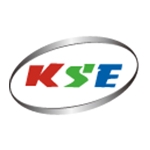Native Advertising Gets a Big Nod from Marketers

Native advertising, popularly defined as advertising that matches the context of the content and platform on which it is displayed, has been consistently gaining approval from digital marketers.
Some popular formats for native ads include:
- Ads shown alongside organic results on search engines
- Promoted posts for keyword searches on social media
- Recommended articles on blogs
Though native advertising may seem similar to content marketing, there are some very subtle differences between the two. One likes the distinction made in this blog post: “sponsored content is designed to be read; native advertising is designed to be shared”.
According to a report published by eMarketer, US native ad spend is projected to jump to $8.8 billion by the year 2018 from the $3.3 billion reported for the current year. Despite numerous challenges associated with serving and analyzing the ROI from campaigns of this nature, native ads are being seen in a more favorable light than ever before. The main reasons marketers cited for favoring native ads over traditional advertising were:
- The unusual ability of native advertising to generate interaction and win consumers’ attention
- Ability to drive viewers to owned media
- Better adaptability on mobile devices which continue to dominate the consumer industry
Clearly, the market is moving away from ads displayed randomly to disinterested audiences. As digital marketers plan their long-term marketing strategy, this is an emerging trend they should evaluate and adapt fairly quickly.


Add new comment